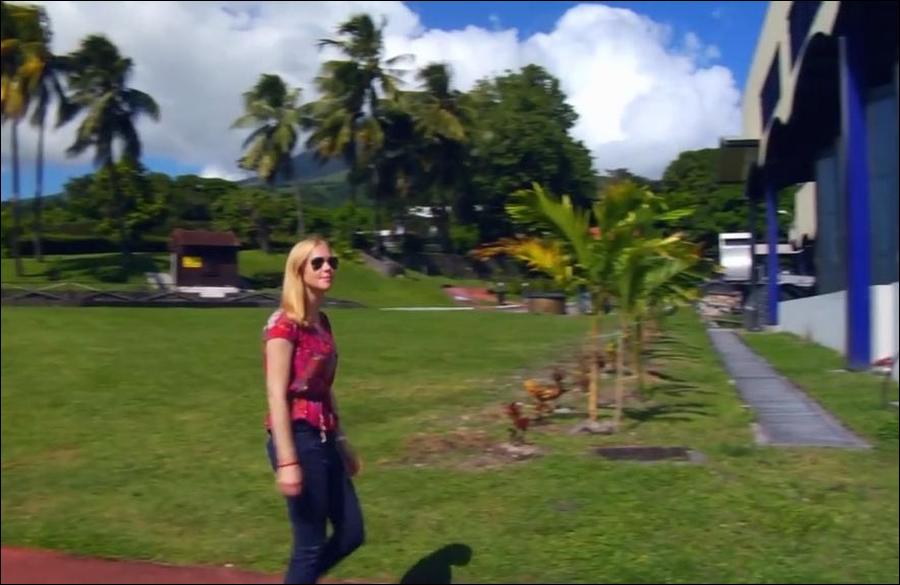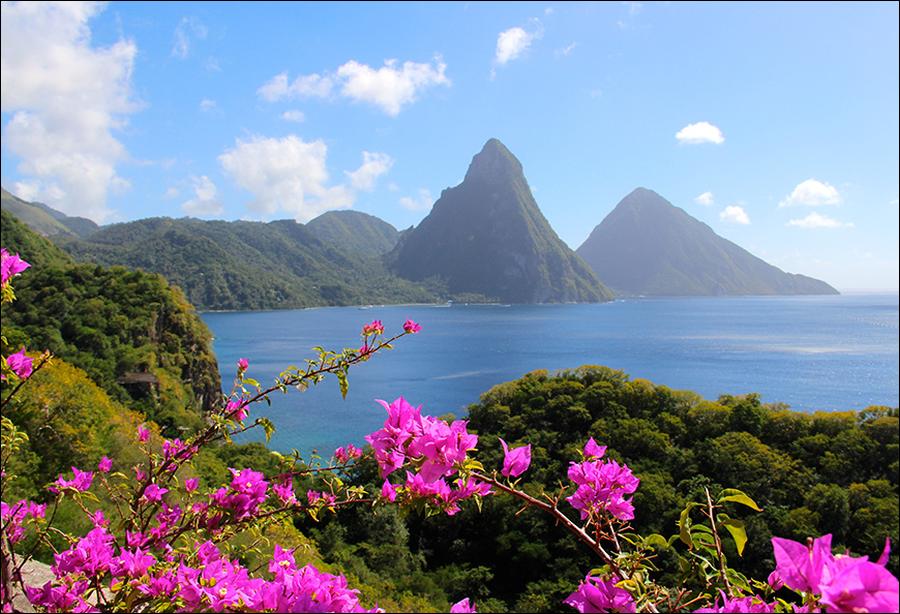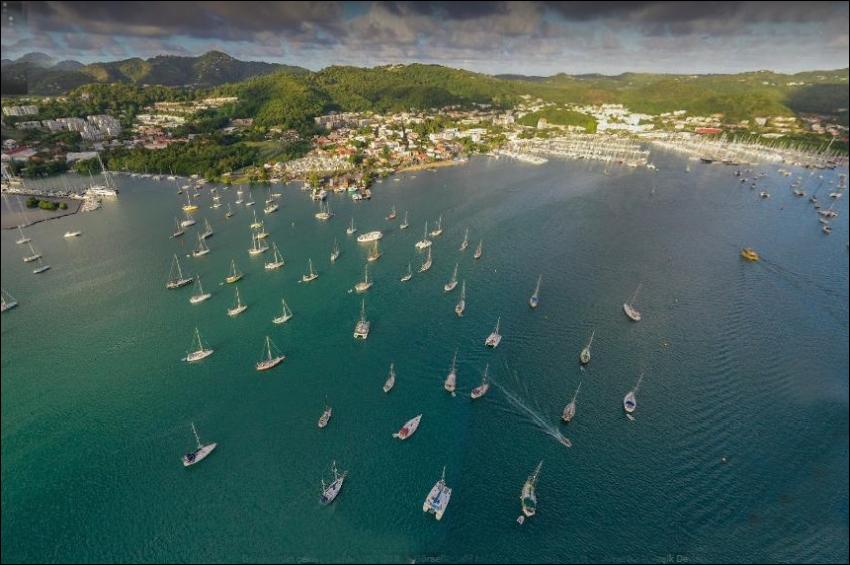Aquamarine waves as warm as bathwater, fish so fresh you can still taste the saltwater and balmy breezes gently swaying the palm trees are all reasons travelers love the Caribbean.
After days spent unwinding by the beach with a cool cocktail or two, there’s so much more to explore beyond the beaches. Whether it’s a visit to a chocolate plantation in Grenada, dancing to reggae in Montego Bay or exploring colonial history in Antigua, here are eight ways to do a deeper dive into Caribbean culture.
Of the destinations mentioned below, only Puerto Rico was damaged during the 2017 hurricane season.
On Barbados’ Platinum Coast on the island’s west side, visitors and locals alike flock to the white sand beaches at Paynes Bay, Sandy Lane and Batts Rock. Tamarind is one of the Platinum Coast’s most welcoming resorts. After a swim, guests can enjoy mojitos made with rum, which has been distilled in Barbados for more than 300 years.
For those who want to go deeper, the hotel offers guests a four-hour guided rum shop crawl, stopping for samples at three rum shops as well a pit stop at Mount Gay Rum’s visitor center. Want to stay longer? Mount Gay Rum offers a comprehensive signature tour and a hands-on cocktail workshop that lasts a couple hours. It’s just a short ride from the hotel and transportation is included in the fee.
Colonial history in Antigua
Antigua’s coast is a wonderland of sheltered bays and secluded swimming spots. Surrounded by dense hillside vegetation, Hermitage Bay is an oasis of brilliant blue water just right for snorkeling, kayaking and aimless floating.
A casually luxurious retreat, tranquil Hermitage Bay resort is located on the beach. Private guest cottages offer open space and outdoor showers. The British Royal Navy settled in Antigua in the 18th century, recognizing sheltered English Harbour’s strategic importance in monitoring enemy activity and offering protection from storms.
For a window into the country’s colonial heritage, book the resort’s tour of the island’s historic sites, including Nelson’s Dockyard National Park, a UNESCO World Heritage Site. It’s the only continuously working dockyard in the world featuring Georgian architecture.
Slavery flourished here until emancipation in 1834, while Antigua was granted independence from Britain in 1981. The dockyard’s interpretation center and museum offers insights into Antigua’s complex colonial past and independent present.

Desert sky in Aruba
On Eagle Beach and Palm Beach the blue-green water is so clear, a dive under offers a Technicolor parade of underwater life. On land, not far from these long expanses of powdery sand, a cluster of candle cacti and twisted divi divi trees flourish.
For visitors who thought the Caribbean was all lush landscapes, Aruba surprises with desert terrain covering much of the island. After a swim, get a greater sense of Aruba’s arid landscape and explore Arikok National Park on a Jeep excursion with De Palm Tours. Native plants include aloe, candelabra cactus and calabash, heavy with gourd-like fruit.
De Palm Tours pick up passengers in front of the sleek Renaissance Aruba Resort, making it a fine base camp. Located in Oranjestad, Aruba’s diminutive capital, it’s convenient for exploring the town’s sherbet-colored buildings and beaches.
For adventures on two wheels, Aruba just rolled out a bike share program, Green Bike Aruba, with 100 bikes available at eight stations in town and at several beaches.
Chocolate in Grenada
Grand Anse Beach is a two-mile stretch of white sand on Grenada’s sheltered southwest coast. All beaches in Grenada are public, so enjoy sharing the beaches with locals.
Grenada is nicknamed the Spice Isle for its array of homegrown aromatics, hence the name of Spice Island Beach Resort, which sits directly on Grand Anse Beach. It’s a posh resort with a British touch so don’t be surprised when a tea trolley laden with chocolaty goodies rolls in at 4 pm.
For those who can never satisfy their chocoholic cravings, a visit to Belmont Estate takes guests through the cocoa fields and the bean-to-bar chocolate-making process. A cup of the estate’s rich cocoa and a bar of their deep, dark chocolate are just a few of the tempting treats.
Reggae music in Montego Bay, Jamaica
Montego Bay’s glistening turquoise waters look as if they were lifted from a postcard. Half Moon resort is situated between two of Montego Bay’s best private beaches: crescent-shaped Sunset Beach and Sunrise Beach, which are only open to resort guests. Sunset Beach is a fine spot to paddle a kayak or balance on a standup paddleboard while Sunrise Beach attracts horseback riders.
After a swim, bask in the sun and listen to the distinct beat of reggae, as much a part of the Montego Bay soundtrack as the waves. For a deeper dive, annual music festivals such as July’s Reggae Sumfest draw an international crowd. To experience the islands’ sounds any evening, catch a taxi for the quick ride to Pier One. This nightclub is known for its variety of music, including reggae and dancehall. A DJ keeps the dance floor packed into the wee hours.
Jewish culture in Curaçao
Avila’s side-by-side beaches are a tropical dream just a few minutes’ walk from Willemstad, Curaçao’s capital. The water is protected from wind and waves by offshore breakwaters so it’s usually as calm as a cup of chamomile tea.
Dutch is the official language in Curaçao, though Papiamentu, a curious blend of Spanish, Portuguese, French, Dutch and English, is widely spoken between locals. This language reflects some of the many influences that have contributed to the country’s multicultural identity.
If the linguistic melting pot sparks further curiosity, Mikvé Israel-Emanuel Synagogue is walking distance from Avila Beach. A visit confirms this small island’s broad diversity. Sephardic Jews starting arriving from Spain and Portugal in the 1650s (some stopping in Holland first) and a small community remains active today.
Consecrated in 1732, the synagogue claims to be the oldest in continuous use in the Western Hemisphere. It features stained-glass windows and ornate menorahs. The compact adjacent museum illustrates the history of the Jews in Curaçao.
Hike the Gros Piton in Saint Lucia
For dazzling beauty both below and above sea level, the village of Soufrière is hard to beat. With its clear bay surrounded by towering cliffs and coconut palms, Anse Chastanet is a perfect place for a tropical swim, and Anse Chastanet Resort is located on its namesake soft sand beach.
Just a few steps offshore, there’s a coral reef teeming with fish, a rainbow jackpot for snorkelers and divers. Swimmers can spot the towering Pitons, twin volcanic peaks. For an up-close encounter, book the resort’s guided trek to the summit of Gros Piton. Expect some steep sections as it winds through jungle-like terrain. The stellar view from the top makes the strenuous two-hour climb well worth it for those in shape to make the attempt.
A Culinary Tour of San Juan
Enjoy the beaches in San Juan’s Isla Verde neighborhood, just minutes away from the cultural riches of Old San Juan. Isla Verde’s urban beaches, including Pine Grove, El Alambique and Balneario de Carolina are worth a visit.
San Juan Water Beach Club Hotel, located on El Alambique beach, offers many indulgent food options. Beach attendants hand guests juicy fruit kebabs and refreshing frozen fruit treats called limbers as they lounge beachside.
The onsite restaurant, Zest, offers a menu that exploits the island’s homegrown produce including passion fruit, mango and guava. It’s also just a quick bus or a cab ride to Old San Juan and its rich food scene. Contemporary cocina criolla is a fusion of Spanish, African and native Taíno influences that mirrors Puerto Rico’s diversity and is a powerful lens into its history.
To learn more about the local food scene, book Spoon Food Tour’s Old San Juan Walk & Taste Tour. Sip Puerto Rican coffee straight from the mountains of Yauco and sample traditional mofongo, those mashed green plantains that are an integral part of Puerto Rico’s culinary identity.
San Juan Water Beach Club Hotel was closed for several weeks after Hurricane Maria last year, but it has been fully operational since mid-October, 2017. Spoon Food Tours re-started their operations on December 1. Much of San Juan is open for business and tourists are being welcomed with open arms.



